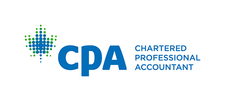MONEYSAVER
Look beyond revenue for profit growth.
Businesses are already looking toward 2017 and considering what has to be done to keep profits growing. The Canadian economy is expected to grow at only 1.5% according to a prediction by the Conference Board of Canada, which claims that “…there are plenty of headwinds for Canada’s economic growth prospects:
- Investment in the oil and gas sector is still falling.
- Non-energy investment is lacklustre, so Canada may soon face lack of capacity in manufacturing.
- Canadian consumer spending may not improve because incomes aren’t rising sufficiently.
- Consumers are also stretched thin with debt.
- Growth prospects for the global economy remain poor.
- U.S. growth this year is also tepid.
Preparing for 2017
In a slow-growth environment, the best way to maintain or improve the bottom line is to reduce expenses. Now is the time to look at year-to-date financial figures and establish budget goals for the next fiscal year.
Start with zero-based budgeting.
Consider the Following
Start with zero-based budgeting rather than simply adding a percentage to last year’s expensed figures. Every item of revenue and expense in the general ledger is reviewed and the revenue and expense items are justified with realistic assumptions.
1. Consider the possibility of having employees work from their homes in order to:
- reduce the cost of lease space
- reduce travel allowances or reimbursement costs
- reduce in-house cost for utilities, telephones, taxes, maintenance, and interest
2. Review the communications system. Determine whether a separate facsimile line is necessary. Consider using an Internet system that connects to each employee’s smart phone rather than using the traditional land line.
3. Consider whether the cloud would reduce computer, printing and communication costs and still enable employees to find data from one source.
4. Purge old documents. Much data older than eight years can be shredded to free up space.
5. Review the age and condition of your work vehicles. Should you buy a new vehicle or spend money on repairs and maintenance?
6. Can some vehicles be sold to reduce the cost of insurance, licences, repairs, maintenance and fuel?
7. Review the budget for snow removal and ground maintenance. Perhaps a flat rate per snow removal would be cheaper than a contract. Could ground maintenance be performed less frequently?
8. Review electricity consumption. Can work schedules be altered to take advantage of lower, off-peak rates? Is it time to update the lighting systems, both in the warehouse and in the yard, to higher-efficiency lighting?
9. Consider whether “just in time” delivery is a better way to manage inventory. Delivery “only as needed” reduces the amount of space devoted to storage and frees up working capital by cutting inventory costs.
10. Examine your lines of credit, credit cards, mortgages and loans. Perhaps interest costs can be reduced, advance payments made, and credit cards paid off with lines of credit at lower interest rates.
11. Determine whether it is necessary to maintain all full-time personnel. Could their jobs be done by part-time employees or contract workers?
12. Evaluate employees on performance and return on investment. Give raises simply based on productivity, quality of work, interaction with clients and staff. Have candid interviews with employees to obtain feedback on how they view their performance.
13. Ask all employees how they would improve their expertise to increase productivity or reduce costs.
14. Examine the time taken to collect receivables. If your company is not receiving payment within 30 to 45 days, perhaps it is time to implement a COD policy for late payers. If a large part of a delinquent client’s bill is, for example, machine parts, then perhaps you should have a deposit-for-parts policy in place. Otherwise, your business is acting as a bank for your clients but it is you who is paying your bank or supplier for overdraft or overdue accounts payable.
15. Examine credit card costs. If the cost of collecting credit card payments is excessive, consider switching to a debit card or e-transfer.
16. Going paperless can save funds. Establish a system of filing for incoming email; items received by surface mail should be scanned, filed, and then discarded. Use the Internet to transmit information related to invoices, payroll and payments. Consider e-transfers to clients rather than cheques.
17. Apply the 80/20 rule. Evaluate your customer base and determine the top 20% of your clients. Stratify the remaining 80% and determine which are the most aggravating to deal with. Stop dealing with them and concentrate on the best 20%. Work on improving your relationship with those in the remaining 80% who show promise.
Budget Like a Start-Up
Ensuring a solid continuous bottom line in times of economic uncertainty requires owner-managers to veer away from the traditional budget process. Management must look at all revenue opportunities and expenditures as if their business were still in the start-up phase and justify the figures for the following year on a line-by-line basis. This will give a better understanding of how to build opportunities and reduce costs.
Contact Argento CPA today!
Source: BUSINESS MATTERS
Disclaimer: BUSINESS MATTERS deals with a number of complex issues in a concise manner; it is recommended that accounting, legal or other appropriate professional advice should be sought before acting upon any of the information contained therein.
Although every reasonable effort has been made to ensure the accuracy of the information contained in this letter, no individual or organization involved in either the preparation or distribution of this letter accepts any contractual, tortious, or any other form of liability for its contents or for any consequences arising from its use.
BUSINESS MATTERS is prepared bimonthly by the Chartered Professional Accountants of Canada for the clients of its members.
Richard Fulcher, CPA, CA – Author; Patricia Adamson, M.A., M.I.St. – CPA Canada Editor.
Contact us: patricia@adamsonwriters.ca


